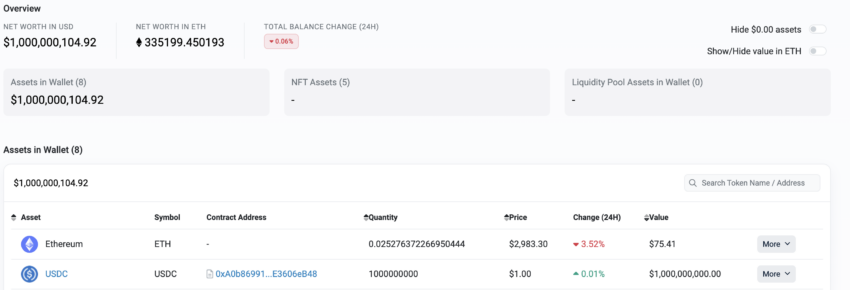Binance Opts for USDC Reserves While It Seeks India Return and Dubai Entry
Binance, the world’s largest cryptocurrency exchange, is now converting its billion-dollar Secure Asset Fund for Users (SAFU) to USD Coin (USDC). This move aims to bolster user trust by utilizing a more stable and transparent stablecoin.
Concurrently, Binance is preparing to re-enter the Indian and Dubai markets.
Why Binance Converted SAFU to USDCEstablished in 2018, the SAFU serves as an emergency fund to protect Binance users under extreme conditions. Previously consisting of Bitcoin, Tether, True USD, and Binance’s own BNB, the SAFU fund has been essential in securing user assets against potential losses.
Notably, the conversion to USDC now represents 3% of the stablecoin’s circulating supply.
Binance claims that through this conversion, it is adopting audited and transparent financial practices. It is particularly significant as the platform navigates complex regulatory environments.
“Over the years, we’ve continued to monitor SAFU’s size, maintaining the balance at a level adequate to safeguard our users. Although it has fluctuated, this level is typically set at $1 billion. SAFU continues to be a core part of our responsibility to the ecosystem, and we continue to evolve to meet market conditions head-on,” Binance explained.
Read more: Binance Review 2024: Is It the Right Crypto Exchange for You?
 Binance’s SAFU Wallet. Source: Etherscan
Binance’s SAFU Wallet. Source: Etherscan
Simultaneously, Binance is aiming to reestablish its presence in India. The Economic Times has reported that the crypto giant is negotiating its return after being one of nine crypto exchanges blocked by the Indian government in January for non-compliance.
In its comeback, Binance plans to reform its South Asian operations to fully comply with India’s Financial Intelligence Unit (FIU), emphasizing adherence to all relevant local regulations.
This reform includes settling a $2 million penalty as part of its compliance efforts. The crypto exchange will also address earlier gaps, particularly the avoidance of a 1% tax deducted at source.
The Economic Times also highlighted that Binance recorded an estimated $4 billion in crypto holdings among investors at its peak. The return reflects a broader trend of crypto exchanges working to align with national financial guidelines, ensuring their services remain accessible and secure amidst evolving regulatory frameworks.
Read more: Crypto Regulation: What Are the Benefits and Drawbacks?
Meanwhile, Binance has successfully obtained a full crypto license in Dubai after a comprehensive regulatory review and adjustments in corporate governance. The license was granted following significant concessions from Binance’s co-founder, Changpeng Zhao. He agreed to relinquish voting control in the Dubai-based entity, Binance FZE.
This milestone allows Binance FZE to transition from an Operational MVP license to a full Virtual Asset Service Provider (VASP) license, enabling it to offer services to a broader demographic, including retail investors.
The crypto exchange is also in negotiations with various jurisdictions to finalize its global headquarters.
The post Binance Opts for USDC Reserves While It Seeks India Return and Dubai Entry appeared first on BeInCrypto.
